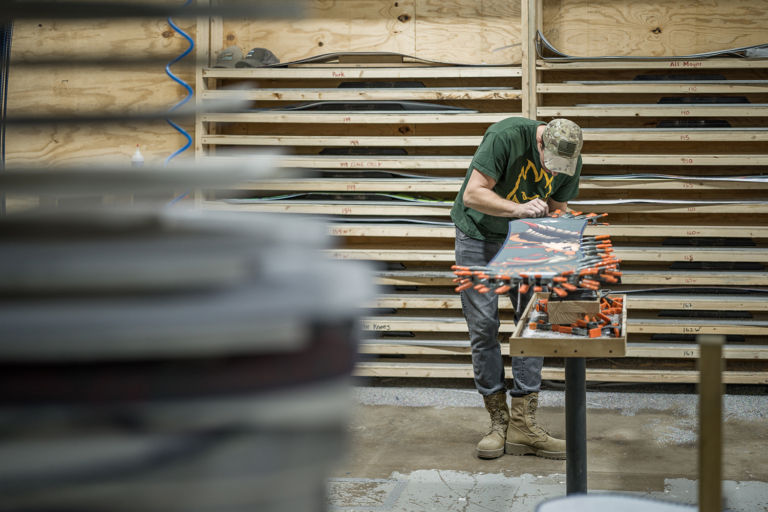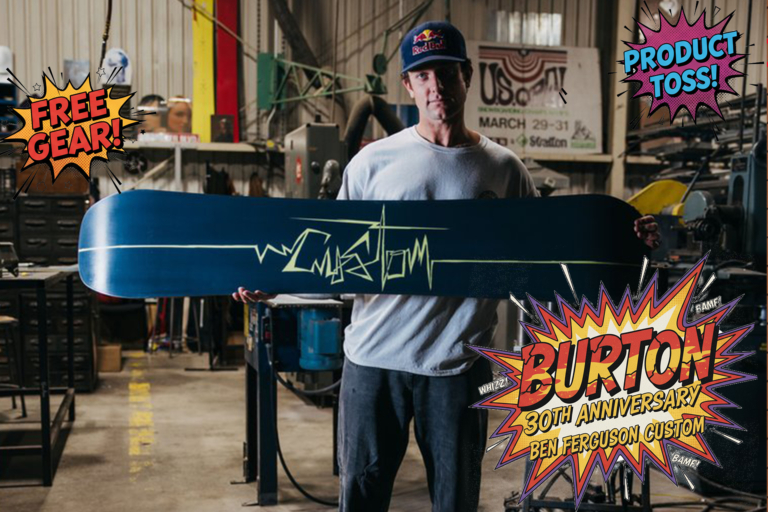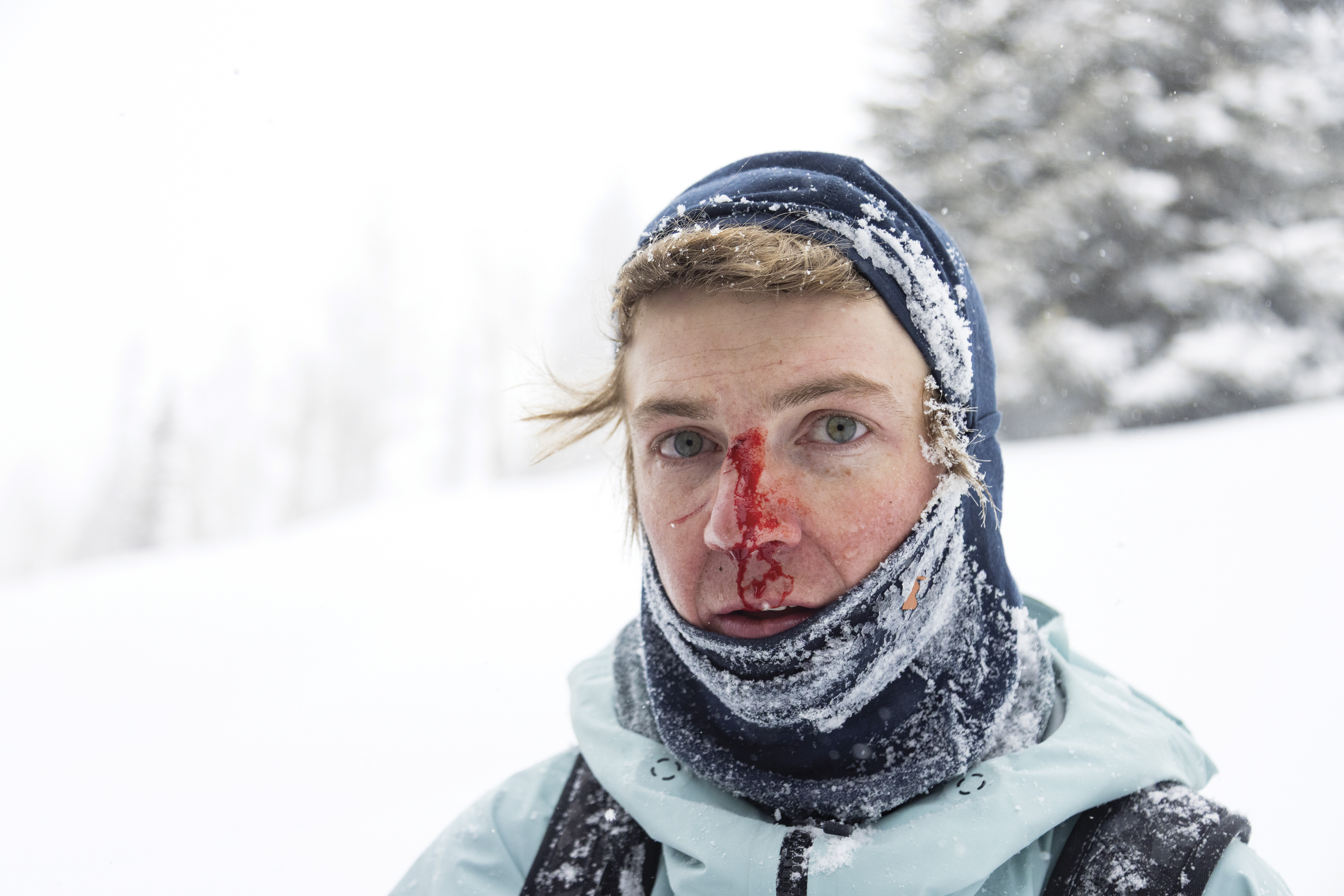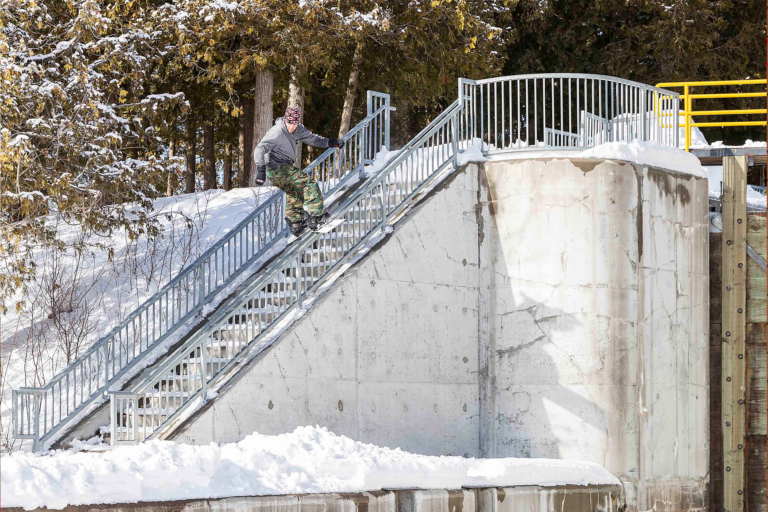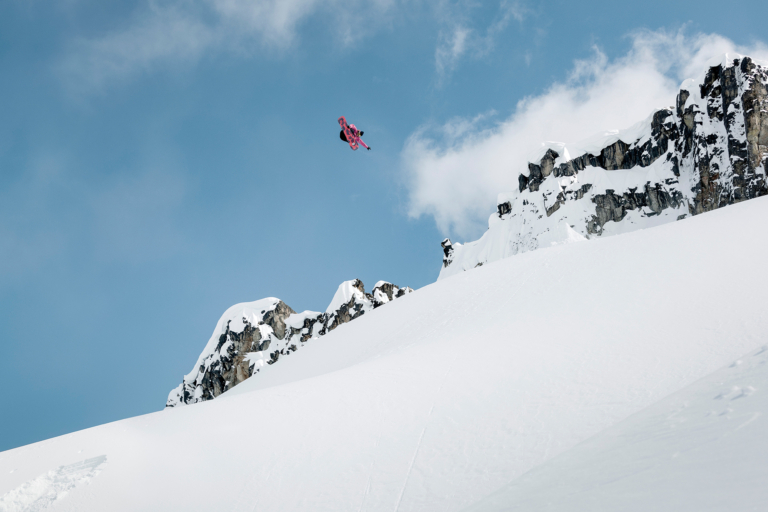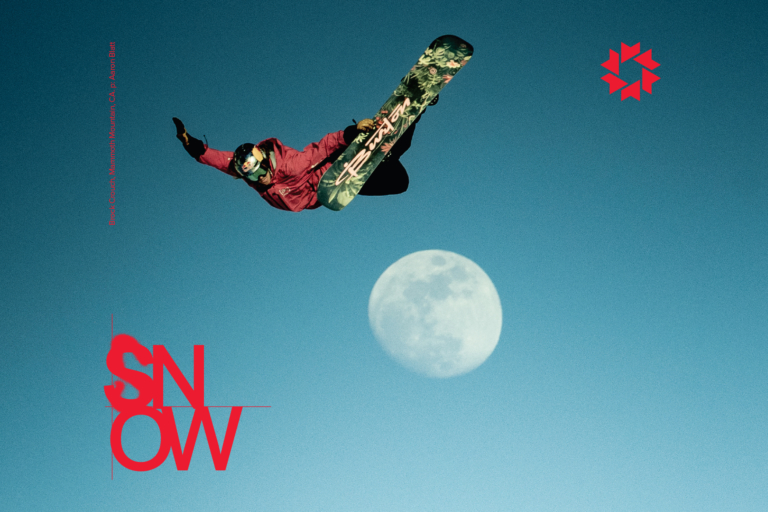
The following is a feature from Snowboard Magazine’s Issue 20.1. To see it in print, order a copy here.
The increasing cost of everything around us, including access to our beloved sport, has become a contentious topic lately. It’s a tough pill to swallow, but as snowboarders, aside from the gear we need, we can’t make it happen without snow and a hill. A chairlift is nice, plus an impeccably manicured surface underfoot. Speaking of feet, when the toes get cold or you need to take a break, a warm lodge really hits the spot. Access to food while on said break? You betcha! And when that chili bread bowl finally hits, a heated bathroom is just what the doctor ordered. Speaking of doctors, this snowboarding thing can be hazardous! Safety should be first, so it’s always good to have an expert in first aid nearby.
A ski resort may seem like a pretty simple operation–build some lifts, maybe a lodge or two, and just add snow—but in reality, even the smallest resorts rely on a complex web of intertwining departments, buildings, and infrastructure all powered by an army of employees dedicated to keeping the whole thing running seamlessly, mostly for your enjoyment. Resorts aren’t the only places you can go snowboarding (perhaps you have backcountry access and education, maybe you love riding at the local golf course or municipal park), but for most of the snowboarding populace, they’re where snowboarding happens.
Last winter, in the middle of a snowstorm, I sat down with the operation team at Big Bear Mountain Resort, who runs Bear Mountain, Snow Summit, and the recently acquired Snow Valley Resort, to connect the dots between what it costs to operate a resort and the price of a lift ticket. So sit down, buckle up, and take a big deep breath as we weave this web.
The hierarchy of resort expenditures is, in order: operating expenses, facilities maintenance, employee wages, and revenue. Each of these categories is necessary for a resort to run effectively and each impacts the bottom line, which is reflected in the cost of a lift ticket. Let’s get into the details.

When a resort turns the chairs on every morning, there are a lot of things we probably take for granted as we’re being whisked up the mountain to take our first run of the day. For example, did it snow the night before? Local government agencies may be responsible for making sure public roads are clear, but it’s on the resort to remove any snow from the base area access and the parking lots, which can require equipment (snowplows, shovels, ice scrapers), resources (fuel and electricity), and hours of physical labor (employee staffing) that have associated costs.
Like many resorts, BBMR employees work tirelessly to make the guest experience as seamless as possible. They want your trip to and from the mountains to be a smooth one, and often send alerts and social media posts with road updates. When you arrive, your first resort employee interaction is usually with a parking attendant, who works in chorus with other attendants to get you parked as quickly as possible. They repeat this process hundreds, if not thousands of times each day based on a plan developed by a traffic flow consulting firm with input from the resort and San Bernardino Sheriff’s Department. Did you know traffic flow consultants exist? Me, neither. Speaking of the Sheriff Department, on peak dates, typically during the holidays when above-average visitation is expected, BBMR enlists the department to help manage traffic flow, which (you guessed it) isn’t free. These may not be the most exciting elements when it comes to resort operations, but they are essential pieces of the guest experience puzzle.
Once you’ve parked and made your way to the base area, aka the last stop before hitting the slopes, it’s time for a quick self-check. What happens next depends on your personal situation, but the resort has prepared for any possibility. Do you need tickets? Rentals? Food? A bathroom? Forgotten your goggles? There are staffed facilities for everything. As guest expectations evolve, resorts must adapt, which may result in some growing pains. In Snow Summit’s case, for example, they had been experiencing a jam up in foot traffic in their rental shop, which was located on the bottom floor of the main lodge in a tight area with no restrooms or access to the upper floors. Above the rental shop was part of the cafeteria, which by the end of the season, typically smelled of cheeseburgers and boots. Not ideal. Aside from that, it was challenging for guests to get their rental gear quickly so that they could get out on the hill—what they were there to do in the first place. It was also a pain point for the rental shop staff; employee surveys pointed out that they, too, were cramped and feeling the inefficiencies.

Note the mention of surveys. When I press Justin Kanton, BBMR’s advertising and PR director, from my singular perspective of not needing a more robust rental program because I own my gear; or not desiring RFID scanners, because I could easily just flash my pass to someone; or that a bigger lodge doesn’t matter to me because I’m fine with riding all day without food, he quickly pointed to the fact that BBMR is constantly conducting surveys with both their visitors and employees, and the resort listens.
“These changes and expansions here and there aren’t done because we want some fancy new lodge to flaunt or flashy new rental gear,” Justin explains. “It’s because our customers and employees want it, and they appreciate it when we make these changes.” The really harsh reviews? In an effort to understand the experience of guests who leave credible, negative reviews, there are designated staff who will follow up and try to rectify the issue so that it won’t happen to others in the future. In BBMR’s eyes, transparency with customers is key.
All of this comes with an expense, of course, but in my crusty point of view, I was stuck in my ways, not considering the needs of many others who are trying to get the same enjoyment out of a day on the hill as I am. Come to think of it, it is much nicer to slip my boots off in front of a fireplace in the base area than waiting for my cramped, frozen car to warm up when the tootsies are chilly.
It’s also important to remember that a resort doesn’t just run itself; it takes actual people, from ticket office personnel and lift attendants to the aforementioned rental shop techs and parking crews. Oh, and don’t forget the on hill operations like snowmaking, grooming, and lift maintenance that keep everything running smoothly and safely. Not to mention the patrollers, who not only are there in case of injury, but help to maintain the terrain to prevent danger, and at larger mountains, mitigate avalanches. Then there are the instructors, who are responsible for introducing snowboarding to the next generation of riders, and the bartenders and serving staff that create the après experience. Plus all of the guest services agents, custodians, retail staff, cooks, cashiers, and marketing crew, as well as the resort photographers and videographers who freeze their fingers off every day, sharing content to the feed that keeps you stoked. It’s a literal army.
A resort’s workforce is vital to its sustained success. In recent years, with housing becoming scarce and prices rising, especially in mountain towns, employee retention has become a huge challenge. Various resorts are navigating their local situations in unique ways. In Big Bear Lake, BBMR purchased a Travelodge and gave the place a massive overhaul, including renovating all sixty rooms and installing fitness equipment, snack stations, and gaming consoles in common areas to create a community vibe for 100-plus seasonal employees in the winter.
The procurement of the Travelodge just scratches the surface when it comes to BBMR’s recent employee investment efforts. California’s minimum wage is 14 dollars per hour, which isn’t a whole lot, considering the state’s high cost of living, so in the fall of 2022, BBMR raised its company-wide minimum wage to 19 dollars per hour and amended its healthcare and 401k programs to include many more seasonal and year-round employees. Kanton emphasizes, “Doing right by our people is doing right by the company.” The changes have directly led to an increase in employee retention, which can be felt at the visitor level with a more experienced, invested staff.
“Our employees are what make this place so special,” says Kanton. “If an employee is scraping by or has to drive an hour to and from work because they aren’t being paid a living wage, or is bummed out because they feel like they’re being taken advantage of, they’re going to be unhappy. Nobody should feel that way, especially while working in such a great industry.” Managing three mountains, with an in-season employee count in the thousands, payroll is a steep but a fundamental cost that is factored into ticket prices.

One of the most celebrated departments at Bear Mountain is of course, the Park Crew—which brings us to an important aspect of a resort’s operating expenses. The real reason I’m at Bear, taking a break in Kanton’s office, is because my snowboard and I are looking for a good time. I am by no means alone in the sentiment that Bear is one of the most fun resorts in the world if you’re looking to get your park antics on. The mountain has been a destination for snowboarders from all over the world because of the siren song of its parks. This is because the Bear Mountain Park Crew works tirelessly to make sure their system of terrain parks is one of the best in the world and is accessible to folks of any age and skill level. Whether you’re looking to lap the rail line or, like me, are interested in bypassing the jumps to hit the sides of each massive table that have thoughtfully been Zaugged into prefect quarterpipes, nothing is off limits in Bear’s all-mountain terrain park.
In order to keep its parks in top shape, there is an immense amount of maintenance that is required on a daily and nightly basis. The warm weather and plentiful sun that Bear receives is a staple of the mountain’s SoCal setting, but it also does a number on the snow, which needs to be kept smooth and fast around park features. Every day, dozens of staff members make the rounds to reset rails, fine-tune take offs, and level out landings. At night, the park crew makes big moves, rebuilding features and getting creative with some of the most innovative and imitated layouts in the industry. The staging area for their custom-fabricated, world-class rails is enormous, because they need to store and maintain hundreds of jibs—with more to come as the crew conceives the next frontier of freestyle features.
The fourth stop on our adventure is revenue. As nearly all resorts are for-profit, at the end of the day there must be a little something left in the pot, especially given how much seasons can change from year to year. For example, take Mammoth, BBMR’s neighbor to the north. During the 2021-22 season, Mammoth experienced one of its lightest snowfall totals ever, only to shatter all records one season later with so much snow that the town of Mammoth Lakes had to truck it away to clear the roads. Big snow years, in theory, allow the resorts to put away some of their revenue for shallower seasons that could come up (think fewer ticket sales, more costs for snowmaking, etc.). This is important because many resorts are the primary employer and economic engine for the town or region where they are located, so they need to keep operating, regardless of fluctuations in winters.
A resort’s annual revenue also plays a big part in determining its future. Every operation is different, based upon its bones—topography, existing infrastructure, and regional climate—but one thing is constant no matter the mountain: evolution. Whether it’s upgrading facilities, adding new trails, increasing parking, or offering more on- and off-hill amenities—resort rejuvenation is a never-ending process. Facilities and equipment depreciate through normal wear and tear, technology never stops advancing, and visitors are constantly asking for more efficient processes, expanded terrain, different cafeteria options, increased lodging, and more. Even if you frequent a beloved mom-and-pop ski hill where you enjoy the absence of many high-tech features, you probably want the lifts to be consistently serviced, plumbing systems to work, parking lot potholes to be fixed, and snowmaking to fill in when Mother Nature isn’t cooperating. It all takes constant investment.

Bear Mountain’s most recent renovation, based upon plenty of surveys, was a remodel of the main lodge and full renovation of the rental shop. In one summer, they poured nearly three million dollars into both projects and guess what? Happier guests! Those upgrades were the second of a three-part project that began in 2019-20 with the expansion of the famed sundeck and will conclude this year with the extension of the paved walkway across the east end of the base area to the Adventure Academy facility that was built in 2018 to better serve kids and families. While you may not hang out on the sundeck at Bear or the equivalent at your local resort, the constant maintenance and upgrades make the rounds at resorts, so no matter how you spend your time at the mountain, you’re still benefitting from the investments.
With last winter’s acquisition of Snow Valley, which is located about a half hour down the road from Big Bear and has been servicing the Los Angeles area since the 1930s, BBMR is going all in on updating several facets of the resort, including upgrades to base area facilities, updating IT infrastructure, and replacing dated wayfinding signage, which can easily soar into the six-figure range, but makes for a more enjoyable experience.
Again, I press Kanton, “Why can’t ticket prices be what they were when I was a kid, though?”
“Well,” Kanton explains. “You know how groceries are getting more expensive? Our food and beverage department goes through a lot of groceries every day. Fuel prices are rising. We go through a lot of diesel in our snowcats, grooming every night. Electricity, which runs the lift…”
I cut him off there, sadly looking down at my shoes. “I get it,” I admit. It’s a reality we’re all experiencing. But it’s truly about the long-term investment. RFID gates have made lift lines more efficient. High-speed lifts make for more runs each day. Technology that allows me to buy a ticket on my phone gets me on hill more quickly. Upgrades to cats mean better snow surfaces and better terrain parks. Investments in staff—in the people who make the resort what it is—make for a better guest experience, higher employee engagement and retention, and a more sustainable mountain community. Lodge and rental shop renovations get my kids out on the slopes more quickly and give us a place to chill when we need to take a break. It’s a massive puzzle of expenses and investments that give us all more bang for the bucks we spend on lift tickets.
Beyond the things you can see and feel, there are also the intangible benefits that come with your lift ticket. During any visit to Bear, any day of any week, you’ll be surrounded by like-minded folks who are there to have a great time, whether it’s a first-timer grabbing gear from the rental shop, a parent taking a much-needed break in the lodge, a crew of groms lapping the park, or a guy in his 30-somethingth season who flew in from the East Coast to peer through the everlasting youthful window just off Chair 9. Every winter, when the lifts are turning and all of the puzzle pieces that make Bear Mountain, Snow Summit, and Snow Valley run smoothy are aligned, that’s your dinero in action. The price of a lift ticket isn’t what it used to be, but when I stop and think about everything that goes into it from an operational and personal perspective, it all adds up.

